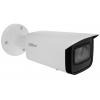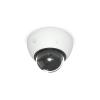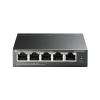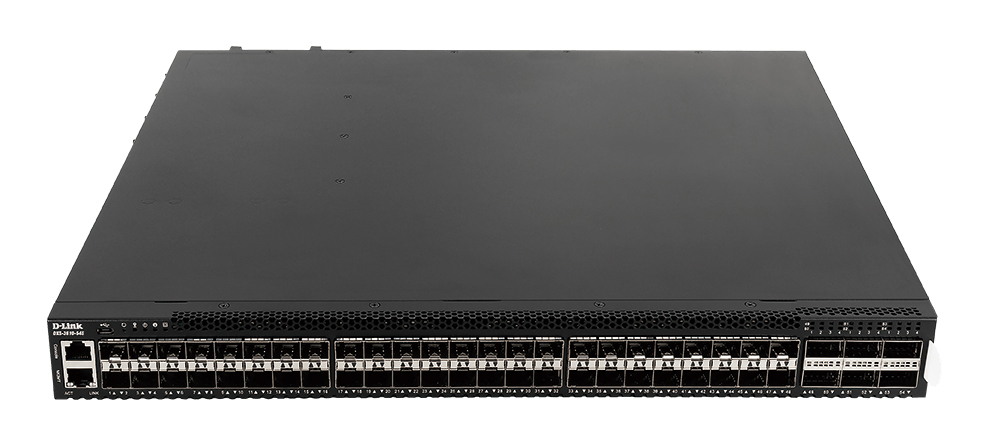-
€
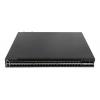
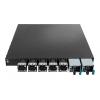
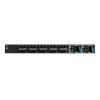
D-Link DXS-3610-54S/SI es un switch administrado con 48 ranuras SFP + (10 Gb / s) y 6 ranuras SFP28 (100 Gb / s). DXS-3610 es una de las series más altas de conmutadores D-Link, se distingue por un rendimiento muy alto: hasta 2,16 Tb / sy una velocidad de reenvío de paquetes de 1607,04 Mp / s. El dispositivo funcionará bien en los entornos y redes más exigentes, incluso como switch de agregación principal para ISP. Tiene 2 módulos de alimentación de AC incorporados que funcionan en modo de conmutación por error / redundante (en caso de falla de uno, el otro se enciende). El consumo máximo de energía a plena carga es de 320,8 W.
Como estándar, el dispositivo tiene una licencia de imagen estándar SI. Admite funciones de gestión de Layer 2 como Flow Control, Spanning Tree, MLAD, 802.1AX Link Aggregation, ERPS y protocolos de duplicación de flow / puerto / RSPAN. También es compatible con Layer 2 Multicast (filtrado y MLD / IGMP / PIM Snooping) y configuración avanzada de VLAN, incl. 802.1Q, 802.1v, Q-in-Q, GVRP, VLAN Private o Super VLAN. Además, admite funciones de Layer 3: ARP, túnel IPv6, routing estático y routing de hardware IPv4 / IPv6, BFD, OSPF, RIP y VRRPv2 / v3. El switch está diseñado para apilamiento físico, se pueden conectar hasta 12 dispositivos en una pila. La licencia EI (Enhanced Image) opcional agrega los protocolos Layer 3 Multicast, MPLS, Layer 3 VPN y BGP v4 / v4 +, IS-IS y VRF Lite.
Características principales:
- 48 ranuras SFP+ (10 Gb/s);
- 6 ranuras QSFP28 (100 Gb/s);
- Capacidad de conmutación: 2,16 Tb / s;
- Velocidad de reenvío de paquetes: 1607.04 Mp / s;
- Gestión Layer 3;
- la posibilidad de extender la licencia a EI - Enhanced Image (L3 Multicast, L3 VPN, MPLS y BGP).
Especifación:
| DXS-3610-54S/SI | |
| Propiedades generales | |
|---|---|
| Dimensiones | 19", 1U |
| Interfaz |
48 ranuras SFP / SFP+ 1 / 10 Gb/s
6 ranuras QSFP+ / QSFP28 40 / 100 Gb/s |
| Puerto de consola | RJ-45 |
| Puerto de gestión | 10/100/1000 BASE-T RJ-45 Ethernet |
| Puerto USB | 1 puerto USB 2.0 Type A |
| Rendimiento | |
| Capacidad de conmutación | 2,16 Tb/s |
| Velocidad de reenvío de paquetes | 1607,04 Mp/s |
| Búfer de paquetes | 32 MB |
| Tabla de direcciones MAC | Hasta 288K |
| Tabla routingu IPv4 | Hasta 32K |
| Tabla routingu IPv6 | Hasta 16K |
| Tabla forwarding IPv4 | Hasta 144K |
| Tabla forwarding IPv6 | Hasta 144K |
| Marco Jumbo | 9436 B |
| Propiedades físicas | |
| Entrada de alimentación |
Alimentador 1 + 1 redundand 100 - 240 V AC, 50/60 Hz |
| Consumo máximo de energía | 320,8 W |
| Consumo de energía en modo standby | 120,6 W |
| Liberación máxima de calor | 1083 BTU/hr |
| Ruido |
Máx. 79,4 dB(A) Mín. 65,3 dB(A) |
| Refrigeramiento | Activo, 5 ventiladores |
| Dimensiones | 441.0 x 487.44 x 43.5 mm |
| Peso | 9,80 kg |
| Temperatura de funcionamiento permitida | De 0 a 45 gr. C |
| Temperatura de almacenamiento permitida | De -40 a 70 gr. C |
| Humedad del aire permitida | 0%-95% RH |
|
Humedad del aire permitida durante el almacenamiento |
0%-95% RH |
| MTBF | 94,262 horas |
| Certificados | |
| Seguridad | CB, cUL, LVD |
| EMI/EMC | FCC, CE, C-Tick, IC, VCCI |
| Propiedades del software | |
| Apilamiento |
Apilamiento virtual de hasta 32 dispositivos
Apilamiento físico
|
| Función Layer 2 | MAC Address Table
Jumbo Frame
Multi-Chassis Link Aggregation Group (MLAG) 802.1AX Link Aggregation
Port Mirroring
Loopback Detection L2 Protocol Tunneling |
| Función Layer 2 Multicast | L2 Multicast Filtering
|
| Función Layer 3 | ARP
IP Interface
IPv6 Neighbor Discovery (ND) IP Helper |
| Routing Layer 3 | Static Routing
Supports hardware routing entries shared by IPv4/IPv6
Policy Based Route Bidirectional Forwarding Detection (BFD)
|
| VLAN | 802.1Q 802.1v Protocol-based VLAN Double VLAN (Q-in-Q)
MAC-based VLAN Subnet-based VLAN Private VLAN VLAN Group
ISM VLAN (Multicast VLAN) Private VLAN Super VLAN VLAN Trunking |
| AAA | 802.1X Authentication
Compound Authentication Microsoft NAP
Authentication Database Failover Trusted Host |
| QoS (Quality of Service) | 802.1p Quality of Service (QoS) 8 queues per port Queue handling
|
| Control de acceso (ACL) | ACL based on:
|
| Seguridad | Puerto Security
D-Link Safeguard Engine DHCP Server Screening IP-MAC-Port Binding (IMPB) Dynamic ARP Inspection IP Source Guard DHCP Snooping IPv6 Snooping DHCPv6 Guard IPv6 Route Advertisement (RA) Guard IPv6 ND Inspection ARP Spoofing Prevention
SSL
DOS Attack Prevention |
| Gestión | Web-based GUI CLI Telnet Server/Client TFTP Client FTP Client Traffic Monitoring SNMP
System Log DHCP Client DHCP Server DHCP Relay options 12, 60, 61, 82 Multiple Image Multiple Configuration Flash File System Microsoft® Network Load Balancing (NLB) Switch Resource Management (SRM) sFlow DNS Resolver CPU Monitoring MTU Setting Traceroute and Ping LLDP/LLDP-MED DNS Relay SMTP DHCP Auto Configuration SNTP RCP (Remote Copy Protocol) RMONv1 RMONv2 Trusted Host Password encryption Debug command IPv6 Stateless Address Auto-configuration (SLAAC) D-Link Discover Protocol (DDP) D-Link License Management System (DLMS) OpenFlow v1.3 |
| Estándares | |
| MIB i RFC | RFC1213 MIB II RFC1907 SNMP v2 MIB RFC5519 IGMP v3 MIB RFC1724 RIP v2 MIB RFC2021 RMONv2 MIB RFC1643, RFC2358, RFC2665 Ether-like MIB RFC4836 802.3 MAU MIB RFC4363 802.1p MIB RFC2618 RADIUS Authentication Client MIB RFC4292 IP Forwarding Table MIB RFC2932 IPv4 Multicast Routing MIB RFC2934 PIM MIB for IPv4 RFC2620 RADIUS Accounting Client MIB RFC2925 Traceroute MIB RFC2925 Ping MIB RFC1850 OSPF MIB Private MIB RFC1112, RFC2236, RFC3376, RFC4541 IGMP Snooping RFC4363 802.1v RFC2338 VRRP RFC1058, RFC1388, RFC1723, RFC2453, RFC2080 RIP RFC1370 Applicability Statement for OSPF RFC1765 OSPF Database Overflow RFC2328 OSPF v2 RFC2740 OSPF for IPv6 RFC3101 OSPF Not-So-Stubby Area (NSSA) option; makes RFC1587 obsolete RFC2328 makes RFC2178 obsolete RFC2178 makes RFC1583 obsolete RFC1771, RFC1997, RFC2439, RFC2796, RFC2842, RFC2918 BGP RFC3973 PIM-DM RFC5059 PIM-SM RFC3569, RFC4601, RFC4608, RFC4607, RFC4604 PIM SSM RFC3376 IGMP RFC2475 Priority Queue Mapping RFC2475, RFC2598 Class of Service (CoS) RFC2597, RFC2598 QoS Flow Actions RFC2697, RFC2698 Three Color Marker, RFC2093, RFC2904, RFC2095, RFC2906 AAA RFC1321, RFC2144, RFC2313, RFC2420, RFC2841, RFC3394 Encryption RFC2289 One-Time RFC3580 802.1X RFC2866 RADIUS Accounting RFC2138, RFC2139, RFC2865, RFC2618 RADIUS Author. for Management Access RFC1492 TACACS+ Auth. for Management Access RFC2068, RFC2616 Web-based GUI RFC854 Telnet Server RFC783, RFC1350 TFTP Client RFC1157, RFC1901, RFC1908, RFC2570, RFC2574, RFC2575, RFC3411-17 SNMP RFC3164 System Log RFC2819 RMON v1 RFC951, RFC1542, RFC2131, RFC3046 BootP/DHCP Client RFC1769 Time Setting RFC2131 DHCP Server RFC1191 MTU Setting RFC1065, RFC1066, RFC1155, RFC1156, RFC2578 MIB Structure RFC1215 MIB Traps Convention RFC4188 Bridge MIB RFC1157, RFC2571-2576, RFC3411-3415, RFC3418 SNMP MIB RFC1901-1908,RFC1442, RFC2578 SNMP v2 MIB RFC2737 Entity MIB RFC768 UDP RFC791 IP RFC792 ICMP RFC793 TCP RFC826 ARP RFC1338, RFC1519 CIDR RFC2716, RFC3748 EAP RFC2571, RFC2572, RFC2573, RFC2574 SNMP |






 Polski
Polski English
English Italiano
Italiano Español
Español Čeština
Čeština Српски
Српски Deutsch
Deutsch Ελληνικά
Ελληνικά Slovenský
Slovenský

